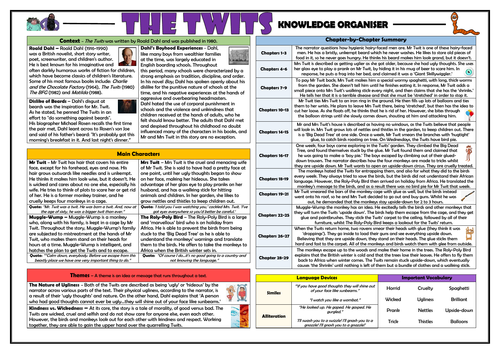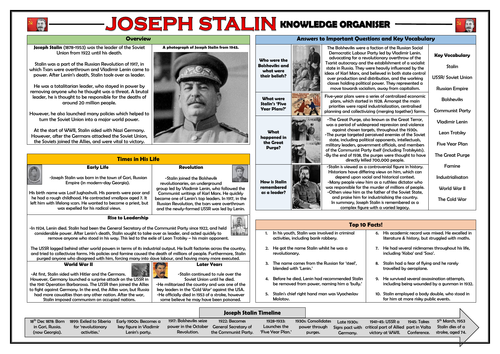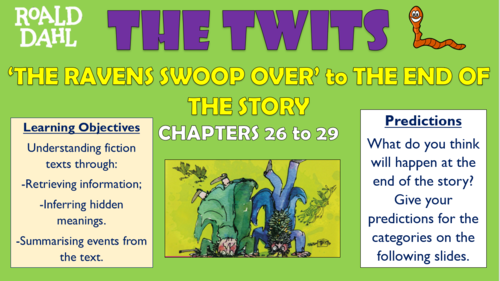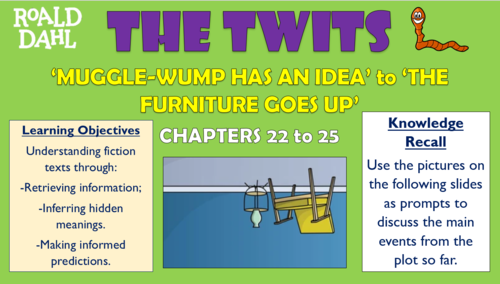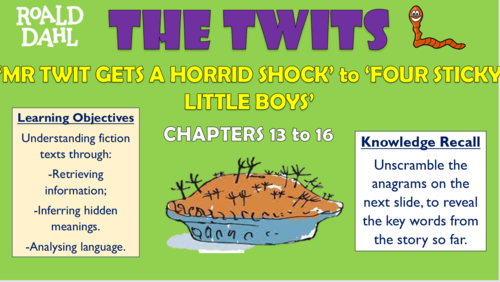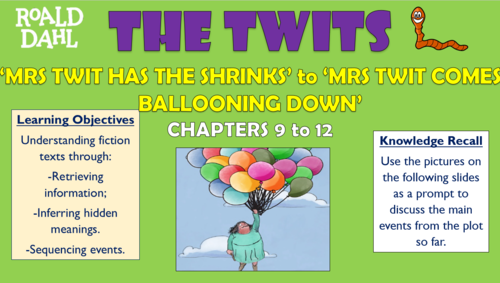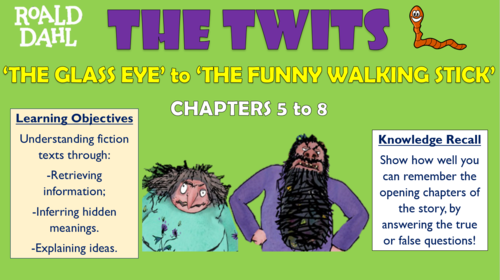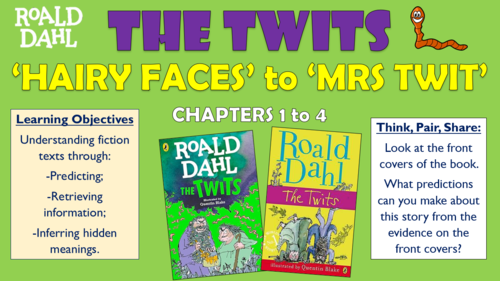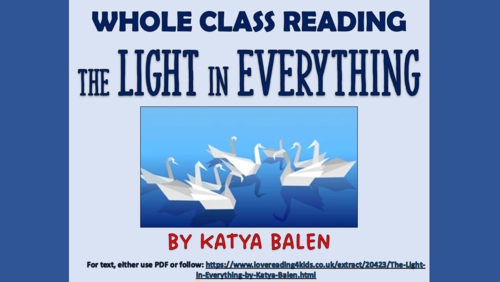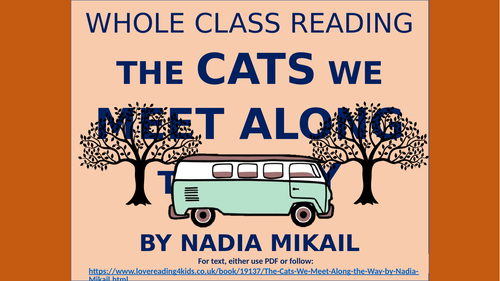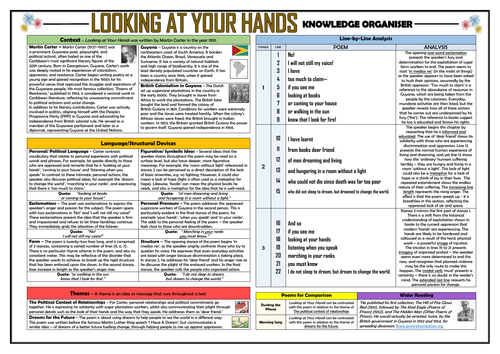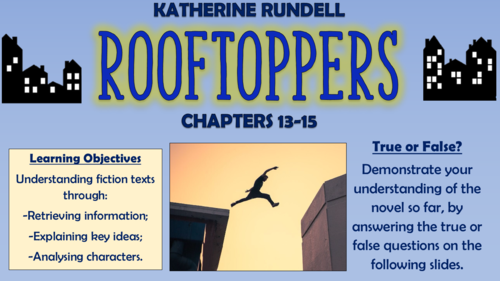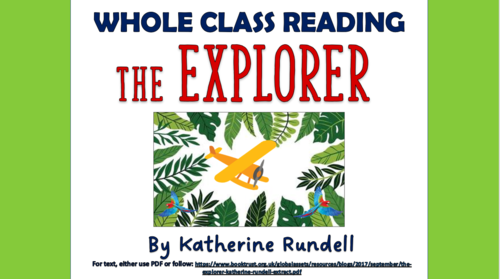
3k+Uploads
1890k+Views
2228k+Downloads
Whole school

The Twits - Knowledge Organiser!
This detailed and visually-appealing resource offers a complete reference point for students learning or revising Roald Dahl’s ‘The Twits.’ It contains comprehensive sections on:
Context;
Chapter by Chapter Summary;
Main Characters;
Themes;
Dahl’s Language Devices;
Important Vocabulary.
Key words and ideas are underlined for easy reference. The resource is designed to be printed onto A4 or A3, and is provided as both a PDF and a Word version (so that you can edit if you want to). All images used are licensed for commercial use and are cited on a separate document (included).

Joseph Stalin - Knowledge Organiser/ Revision Mat!
This clear, detailed and visually-appealing resource offers a complete reference point for students learning about Joseph Stalin. It serves as a useful tool in a wider study of the Russian Revolution, The Great Purge, The Cold War, etc. or when learning about ‘significant people’ in history. It contains comprehensive sections entitled:
Overview;
Times in His Life;
Important Vocabulary;
Joseph Stalin Timeline;
Answers to the Important Questions;
Top Ten Facts.
The resource is designed to be printed onto A3, and is provided as both a PDF and a Word version (so that you can edit if you want to). All images used are licensed for commercial use.
Bundle Sale

The Twits - Lesson Bundle!
This engaging and thought-provoking series of lessons has been devised to provide students with a well-rounded, secure understanding of Roald Dahl’s ‘The Twits.’ Each of the lessons include a wide range of activities, questions and resources for each chapter.
The comprehensive and colourful PowerPoint presentations guide students through a wide range of activities, including those designed to enhance the following skills: retrieval, understanding vocabulary, inference, explanation, summarising, sequencing, analysis and deeper thinking activities. Additional worksheets and templates are also provided where needed for the creative tasks.
All of the resources and tried and tested in real classrooms, catalysing excellent outcomes. The resources are most suitable for children in lower KS2, although with minor adjustments they could be used for slightly younger and older year groups.

The Twits - Chapters 26-29 - 'The Ravens Swoop Over' to the End of the Story!
This engaging and thought-provoking lesson resource aids students in developing a secure understanding of the chapters 26 to 29 of Roald Dahl’s ‘The Twits.’ The chapters covered in these lessons are ‘The Ravens Swoop Over’, ‘The Twits are Turned Upside Down’, ‘The Monkey Escape’, and ‘The Twits Get the Shrinks.’
The lessons are guided by a comprehensive and colourful PowerPoint presentation, and enables students to understand the text through:
-Retrieving information;
-Inferring and deducing hidden meanings;
-Summarising the events in the text.
The sessions include a range of retrieval, vocabulary, inference, explanation and deeper thinking activities. A clear, colourful and comprehensive PowerPoint presentation guides students through the learning. A storyboard template is also provided (in both Word and PDF) for the deeper-thinking summarising task.
There’s a lot in the session (18 slides in total) so I would recommend breaking into two lessons. The lessons are most suitable for children in lower key stage 2, (they were originally made for children in year 3) but they could also be adapted for slightly older and younger year groups.

The Twits - Chapters 22 to 25 - 'Muggle-Wump has an Idea' to 'The Furniture Goes Up!'
This engaging and thought-provoking lesson resource aids students in developing a secure understanding of the chapters 22 to 25 of Roald Dahl’s ‘The Twits.’ The chapters covered in these lessons are ‘Muggle-Wump has an Idea’, ‘The Great Glue Painting Begins’, ‘The Carpet Goes on the Ceiling’, and ‘The Furniture Goes Up.’
The lessons are guided by a comprehensive and colourful PowerPoint presentation, and enables students to understand the text through:
-Retrieving information;
-Inferring and deducing hidden meanings;
-Empathising with characters.
The sessions include a range of retrieval, vocabulary, inference, explanation and deeper thinking activities. A clear, colourful and comprehensive PowerPoint presentation guides students through the learning.
There’s a lot in the session (18 slides in total) so I would recommend breaking into two lessons. The lessons are most suitable for children in lower key stage 2, (they were originally made for children in year 3) but they could also be adapted for slightly older and younger year groups.

The Twits - Chapters 17 to 21 - up to the end of 'Mr and Mrs Twit Go Off to Get Guns!'
This engaging and thought-provoking lesson resource aids students in developing a secure understanding of the chapters 17 to 21 of Roald Dahl’s ‘The Twits.’ The chapters covered in these lessons are ‘The Great Upside-Down Monkey Circus’, ‘The Roly-Poly Bird to the Rescue’, ‘No Bird Pie for Mr Twit’, ‘Still No Bird Pie for Mr Twit’ and ‘Mr and Mrs Twit Go Off to Buy Guns.’
The lessons are guided by a comprehensive and colourful PowerPoint presentation, and enables students to understand the text through:
-Retrieving information;
-Inferring and deducing hidden meanings;
-Empathising with characters.
The sessions include a range of retrieval, vocabulary, inference, explanation and deeper thinking activities. A clear, colourful and comprehensive PowerPoint presentation guides students through the learning. The session ends with a hot-seating activity, for which example questions are provided.
There’s a lot in the session (17 slides in total) so I would recommend breaking into two lessons. The lessons are most suitable for children in lower key stage 2, (they were originally made for children in year 3) but they could also be adapted for slightly older and younger year groups.

The Twits - Chapters 13 to 16 - 'Mr Twit Gets a Horrid Shock' to 'Four Sticky Little Boys!'
This engaging and thought-provoking lesson resource aids students in developing a secure understanding of the chapters 13 to 16 of Roald Dahl’s ‘The Twits.’ The chapters covered in these lessons are ‘Mr Twit Gets a Horrid Shock’, ‘The House, The Tree and The Monkey Cage’, 'Hugtight Sticky Glue’ and ‘Four Sticky Little Boys.’
The lessons are guided by a comprehensive and colourful PowerPoint presentation, and enables students to understand the text through:
-Retrieving information;
-Inferring and deducing hidden meanings;
-Anaysing the writer’s use of language.
The sessions include a range of retrieval, vocabulary, inference, explanation and deeper thinking activities. A clear, colourful and comprehensive PowerPoint presentation guides students through the learning. The session ends with a thought-provoking creative activity.
There’s a lot in the session (18 slides in total) so I would recommend breaking into two lessons. The lessons are most suitable for children in lower key stage 2, (they were originally made for children in year 3) but they could also be adapted for slightly older and younger year groups.

The Twits - Chapters 9 to 12 - 'Mrs Twit has the Shrinks' to 'Mrs Twit Comes Ballooning Down!'
This engaging and thought-provoking lesson resource aids students in developing a secure understanding of the chapters 9 to 12 of Roald Dahl’s ‘The Twits.’ The chapters covered in these lessons are ‘Mrs Twit has the Shrinks’, ‘Mrs Twit gets a Stretching’, 'Mrs Twit goes Ballooning up’ and ‘Mrs Twit comes Ballooning down.’
The lessons are guided by a comprehensive and colourful PowerPoint presentation, and enables students to understand the text through:
-Retrieving information;
-Inferring and deducing hidden meanings;
-Sequencing events from the story.
The sessions include a range of retrieval, vocabulary, inference, explanation and deeper thinking activities. A clear, colourful and comprehensive PowerPoint presentation guides students through the learning. The session ends with a creative activity in which students write Mr Twit’s diary entry after pulling off his greatest trick yet.
There’s a lot in the session (19 slides in total) so I would recommend breaking into two lessons. The lessons are most suitable for children in lower key stage 2, (they were originally made for children in year 3) but they could also be adapted for slightly older and younger year groups.

The Twits - Chapters 5 to 8 - 'The Glass Eye' to 'The Funny Walking Stick!'
This engaging and thought-provoking lesson resource aids students in developing a secure understanding of the chapters 5 to 8 of Roald Dahl’s ‘The Twits.’ The chapters covered in these lessons are ‘The Glass Eye’, ‘The Frog’, The Wormy Spaghetti’ and ‘The Funny Walking Stick.’
The lessons are guided by a comprehensive and colourful PowerPoint presentation, and enables students to understand the text through:
-Retrieving information;
-Inferring and deducing hidden meanings;
-Explaining ideas.
The sessions include a range of retrieval, vocabulary, inference, explanation and deeper thinking activities. A clear, colourful and comprehensive PowerPoint presentation guides students through the learning. The session ends with a creative activity in which students write instructions for an original Twits prank.
There’s a lot in the session (18 slides in total) so I would recommend breaking into two lessons. The lessons are most suitable for children in lower key stage 2, (they were originally made for children in year 3) but they could also be adapted for slightly older and younger year groups.

The Twits - Chapters 1 to 4 - 'Hairy Faces' to 'Mrs Twit!'
This engaging and thought-provoking lesson resource aids students in developing a secure understanding of the chapters 1 to 4 of Roald Dahl’s ‘The Twits.’ The chapters covered in these lessons are ‘Hairy Faces’, ‘Mr Twit’, Dirty Beards’ and ‘Mrs Twit.’
The lessons are guided by a comprehensive and colourful PowerPoint presentation, and enables students to understand the text through:
-Making predictions;
-Retrieving information;
-Inferring and deducing hidden meanings.
The sessions include a range of retrieval, vocabulary, inference, explanation and deeper thinking activities. A clear, colourful and comprehensive PowerPoint presentation guides students through the learning. A worksheet/ template is also provided for the creative character creation activity (in both Word and PDF format).
There’s a lot in the session (19 slides in total) so I would recommend breaking into two lessons. The lessons are most suitable for children in lower key stage 2, (they were originally made for children in year 3) but they could also be adapted for slightly older and younger year groups.

The Light in Everything - Whole Class Reading Session!
This whole class reading session aims to develop students’ comprehension skills through reading and interpreting the opening section of Katya Balen’s ‘The Light in Everything.’
The resource pack includes the extract needed and a clear and well presented PowerPoint, guiding the teacher and learners through the various activities. The reading is followed by a series of activities aiming to develop students’ retrieval, explanation, inference, sequencing and summarising skills. A vocabulary check helps to secure students’ understanding of any new or unfamiliar language.
The tasks are comprised of quick-check questions, solo thinking, pair/ group discussions and deeper thinking activities.
The session is best suited for learners in years 4-5, although with minor adaptations it could feasibly be used with slightly younger and older year groups.

The Cats We Meet Along the Way - Reading Comprehension Lesson!
This whole class reading session aims to develop students’ comprehension skills through reading and interpreting the opening section of Nadia Mikail’s ‘The Cats We Meet Along the Way.’
The resource pack includes the extract needed and a clear and well presented PowerPoint, guiding the teacher and learners through the various activities. The reading is followed by a series of activities aiming to develop students’ retrieval, explanation, inference, sequencing and summarising skills. A vocabulary check helps to secure students’ understanding of any new or unfamiliar language.
The tasks are comprised of quick-check questions, solo thinking, pair/ group discussions and deeper thinking activities.
The session is best suited for learners in years 7-8, although with minor adaptations it could feasibly be used with slightly younger and older year groups.
Bundle Sale

Lower KS2 Maths Knowledge Organisers Bundle!
These clear, detailed and visually-appealing resources offer a complete reference point for teachers, parents and children throughout the teaching and learning of all of the Year 3 and Year 4 maths blocks.
Included are 20 organisers:
Year 3
-Addition and Subtraction
-Fractions
-Length and Perimeter
-Mass and Capacity
-Money
-Multiplication and Division
-Number and Place Value
-Shape
-Statistics
Year 4
-Addition and Subtraction
-Decimals
-Fractions
-Length and Perimeter
-Money
-Multiplication and Division
-Number and Place Value
-Position and Direction
-Shape
-Statistics
-Time
Each organiser contains clear sections covering the key learning areas, including an overview, the specific learning content, and important vocabulary. The knowledge is sequenced in alignment with the National Curriculum and most commonly-used mathematics schemes. Images are used to present and clarify ideas.
The resources are designed to be printed onto either A3 or A4, and are provided as both PDFs and Word versions (so that you can edit if you want to).
Bundle Sale

Upper KS2 Maths Knowledge Organisers Bundle!
These clear, detailed and visually-appealing resources offer a complete reference point for teachers, parents and children throughout the teaching and learning of all of the Year 5 and Year 6 maths blocks.
Included are 19 organisers:
Year 5
-Addition and Subtraction
-Area and Perimeter
-Decimals and Percentages
-Fractions
-Multiplication and Division
-Number and Place Value
-Position and Direction
-Shape
-Statistics
Year 6
-Four Operations
-Area and Perimeter
-Decimals and Percentages
-Fractions
-Ratio
-Algebra
-Number and Place Value
-Position and Direction
-Shape
-Statistics
Each organiser contains clear sections covering the key learning areas, including an overview, the specific learning content, and important vocabulary. The knowledge is sequenced in alignment with the National Curriculum and most commonly-used mathematics schemes. Images are used to present and clarify ideas.
The resources are designed to be printed onto either A3 or A4, and are provided as both PDFs and Word versions (so that you can edit if you want to).

Looking At Your Hands - Knowledge Organiser/ Revision Mat!
This detailed and visually-appealing resource offers a complete reference point for students learning or revising Martin Carter’s poem 'Looking at Your Hands.’ It contains comprehensive sections on:
Context;
Line-by-Line Analysis;
Poetic Devices/ Language Devices;
Themes;
Form/Structure;
Poems for Comparison;
Links to Wider Reading.
Key words and ideas are underlined for easy reference. The resource is designed to be printed onto A3 or A4, and is provided as both a PDF and a Word version (so that you can edit if you want to). All images used are licensed for commercial use.

Rooftoppers - Katherine Rundell - Chapters 16-18!
This engaging and thought-provoking triple-lesson resource aids students in developing a secure understanding of the chapters 16 to 18 of Katherine Rundell’s 'Rooftoppers.’
The comprehensive and colourful PowerPoint presentation enables students to understand the text through:
-Retrieving information;
-Inferring hidden meanings;
-Making predictions.
The sessions include a range of retrieval, vocabulary, inference, explanation and deeper thinking activities. A clear, colourful and comprehensive PowerPoint presentation guides students through the learning. The lesson also includes an answer key for the retrieval questions, and model answer ideas for the more detailed responses, in addition to a template for the ‘deeper thinking’ character analysis profile task (provided in both Word and PDF).
There’s a lot here (23 slides in total) so I would recommend breaking into two or even three separate lessons. The lessons are suitable for students in either upper KS2 or lower KS3, depending upon the individual context of the school and students. I originally used them with year 5 and 6 children.

Rooftoppers - Katherine Rundell - Chapters 13-15!
This engaging and thought-provoking triple-lesson resource aids students in developing a secure understanding of the chapters 13 to 15 of Katherine Rundell’s 'Rooftoppers.’
The comprehensive and colourful PowerPoint presentation enables students to understand the text through:
-Retrieving information;
-Inferring and explaining;
-Sequencing events from the text.
The sessions include a range of retrieval, vocabulary, inference, explanation and deeper thinking activities. A clear, colourful and comprehensive PowerPoint presentation guides students through the learning. The lesson also includes an answer key for the retrieval questions, and model answer ideas for the more detailed responses, in addition to a template for the ‘deeper thinking’ character analysis profile task (provided in both Word and PDF).
There’s a lot here (21 slides in total) so I would recommend breaking into two or even three separate lessons. The lessons are suitable for students in either upper KS2 or lower KS3, depending upon the individual context of the school and students. I originally used them with year 5 and 6 children.

The Explorer - Whole Class Reading Session!
This whole class reading session aims to develop children’s comprehension skills through reading and interpreting the opening two chapters of Katherine Rundell’s ‘The Explorer.’
The resource pack includes the extract needed and a clear and well presented PowerPoint, guiding the teacher and learners through the various activities. The reading is followed by a series of activities aiming to develop children’s retrieval, explanation, inference, sequencing and summarising skills. A vocabulary check helps to secure children’s understanding of any new or unfamiliar language.
The tasks are comprised of quick-check questions, solo thinking, pair/ group discussions and deeper thinking activities.
The session is best suited for children in years 5-6, although with minor adaptations it could feasibly be used with slightly younger and older year groups.

The Machine Gunners - Whole Class Reading Session!
This whole class reading session aims to develop children’s comprehension skills through reading and interpreting the opening section of Robert Westall’s ‘The Machine Gunners.’
The resource pack includes the extract needed and a clear and well presented PowerPoint, guiding the teacher and learners through the various activities. The reading is followed by a series of activities aiming to develop children’s retrieval, explanation, inference, sequencing and summarising skills. A vocabulary check helps to secure children’s understanding of any new or unfamiliar language.
The tasks are comprised of quick-check questions, solo thinking, pair/ group discussions and deeper thinking activities.
The session is best suited for children in years 5-6, although with minor adaptations it could feasibly be used with slightly younger and older year groups.

A Boy Called Hope - Whole Class Reading Session!
This whole class reading session aims to develop children’s comprehension skills through reading and interpreting the opening section of Lara Williamson’s ‘A Boy Called Hope.’
The resource pack includes the extract needed and a clear and well presented PowerPoint, guiding the teacher and learners through the various activities. The reading is followed by a series of activities aiming to develop children’s retrieval, explanation, inference, sequencing and summarising skills. A vocabulary check helps to secure children’s understanding of any new or unfamiliar language.
The tasks are comprised of quick-check questions, solo thinking, pair/ group discussions and deeper thinking activities.
The session is best suited for children in years 5-6, although with minor adaptations it could feasibly be used with slightly younger and older year groups.

